Physical Address
304 North Cardinal St.
Dorchester Center, MA 02124
Acknowledgment: The authors wish to acknowledge and thank Nina Lightdale-Miric, MD. Her efforts in the previous edition of this text provided the foundation for this chapter. The authors would also like to acknowledge Brian W. O’Doherty, coordinator of visual media services. His photographic and video excellence was necessary for the completion of this chapter.
Cerebral palsy and traumatic brain injury are upper motor neuron central nervous system diseases that result in decreased function, muscle imbalances, and malpositioning of the upper limb. Cerebral palsy is often related to hypoxic ischemic encephalopathy (HIE) when an infant’s brain is deprived of adequate blood flow secondary to a hypoxic-ischemic event during the prenatal, intrapartum, or postnatal period. HIE requires immediate intervention and affects 20 out of every 1000 full term births, and is even higher in premature births, affecting 60% of all live, premature births. HIE caused by asphyxia is the leading cause of infant fatalities in the United States, as well as the primary source of severe impairments. The clinical manifestations of HIE are broad, and may include developmental delays, epilepsy, cognitive issues, motor skill delays, and neurodevelopment delays. The true severity of HIE generally cannot be fully determined until the baby reaches 3 to 4 years of age. A commonplace end result of a HIE in infancy is cerebral palsy with varying degrees of severity.
The etiology of an HIE event, occurring before, during, or after the baby is born, are several. HIE during pregnancy has risk factors including maternal diabetes with vascular disease, decreased placental circulation, preeclampsia, cardiac disease, infections of the fetus, drug and alcohol abuse, severe fetal anemia, and lung malformations. HIE during the birth has risk factors including excessive bleeding from the placenta, low maternal blood pressure, umbilical cord rupture, prolonged late stages of labor, abnormal fetal position, and rupture of the placenta or the uterus. HIE during the postpartum period has risk factors including premature babies, severe cardiac or pulmonary disease, infections (sepsis and meningitis), low neonatal blood pressure, brain or skull trauma, and congenital brain malformations.
Cerebral palsy is an irreversible and nonprogressive brain injury. Although the brain insult itself does not change, the sequela of the brain injury varies over time, and may include progressive muscular fibrosis, joint contracture, limb length differences, osteopenia, and/or muscle atrophy. The brain injury that occurs as part of an HIE event is based on the blood supply pattern in the motor cortex; characteristic patterns of brain injury from the middle cerebral artery in the motor cortex lead to characteristic patterns of upper motor neuron dysfunction. The most common patterns of upper motor neuron spasticity lead to muscle imbalances within the upper extremity, with resultant shoulder internal rotation, elbow flexion, forearm pronation, wrist flexion, finger flexion, intrinsic spasticity, and thumb-in-palm deformity. ,
Traumatic brain injury (TBI) is a leading cause of disability and death in the United States. An estimated 1.5 million Americans sustain a TBI annually, and about 50,000 of these people die. , Brain tumors, vascular malformations, and infection are less common causes of TBI. One-third of TBI survivors still require assistance with activities of daily living 1 year following injury. Most TBIs occur in individuals who are less than 45 years old at the time of TBI; those who survive have a normal life span. The enormous lifetime costs of TBI were estimated to be $56 billion in the United States in 1995. ,
Following TBI, the Glasgow Outcome Scale is frequently used to predict the ultimate outcome. Patients with lower scores have a substantially higher incidence of severe sequelae. Age at time of injury and duration of coma are also important determinants of neurologic outcome. Brainstem involvement, as indicated by the presence of decerebrate or decorticate posturing, has a poor prognosis.
The brain-injured patient often has residual limb deformities, including spasticity, movement disorders, contracture, and muscle imbalance similar but not equivalent to cerebral palsy. Spastic deformities in the upper extremity after TBI most often also result in characteristic patterns of shoulder internal rotation, elbow flexion, forearm pronation, wrist flexion, finger flexion, intrinsic spasticity, and thumb-in-palm deformity. Because of the similar patterns of deformities, cerebral palsy (CP) and TBI will be discussed together in this chapter, although we will primarily focus on CP.
By definition, CP is “a group of disorders of development of movement and posture causing activity limitations that are attributed to nonprogressive disturbances that occurred in the developing fetal or infant brain.” The classification of CP denotes the number of limbs involved, as well as the type of movement disorder present. The patient with classic hemiplegic spastic CP has involvement of one side (arm and leg) with sparing of the other side ( ![]() ). The patient with quadriplegic spastic CP has involvement of all four limbs, although the severity may vary between limbs. The type of movement disorder is either spastic, athetoid/dystonic, flaccid, or a combination. Spasticity results from dysregulated reflex arc messaging from the damaged upper motor neurons. We explain this phenomenon to families as the muscles always want to “run” and the intact brain dampens this response. A damaged brain loses this ability and cannot suppress the muscles from moving. Concomitant extrapyramidal involvement causes additional movement disorders, primarily athetosis or dystonia, which is a rhythmic uncontrollable twisting movement pattern (
). The patient with quadriplegic spastic CP has involvement of all four limbs, although the severity may vary between limbs. The type of movement disorder is either spastic, athetoid/dystonic, flaccid, or a combination. Spasticity results from dysregulated reflex arc messaging from the damaged upper motor neurons. We explain this phenomenon to families as the muscles always want to “run” and the intact brain dampens this response. A damaged brain loses this ability and cannot suppress the muscles from moving. Concomitant extrapyramidal involvement causes additional movement disorders, primarily athetosis or dystonia, which is a rhythmic uncontrollable twisting movement pattern ( ![]() ). In addition to these spastic movement patterns, the limb or portions of the limb may be flaccid without any volitional movement. Various tones result in muscle imbalance across limb segments, which leads to abnormal upper limb position, contracture formation, and impaired function.
). In addition to these spastic movement patterns, the limb or portions of the limb may be flaccid without any volitional movement. Various tones result in muscle imbalance across limb segments, which leads to abnormal upper limb position, contracture formation, and impaired function.
Life priorities for individuals with CP differ due to their motor system disabilities. According to Bleck, the top four self-reported life priorities for individuals with CP were, in order of importance, (1) communication with others; (2) ability to perform activities of daily living, particularly personal hygiene; (3) mobility in the community; and (4) walking. As our society becomes more technologically sophisticated, use of the upper extremities becomes more critical. Care of the patient with CP has shifted toward an increased emphasis on improved upper extremity use.
The goals for treatment of the upper limb are discussed with the family to allow the family shared decision making in determining treatment interventions. Goals for intervention are different for a highly functioning hemiplegic child versus a lower functioning quadriplegic adult. In a higher functioning child, common goals for surgery include improved joint positioning, improved grasp/release or pinch functions, and improved cosmesis. For the lower functioning adolescent patient, common goals are for better joint positioning and better hygiene. Establishing appropriate expectations for treatment intervention is an important early step in care of the child with upper limb dysfunction due to CP.
Impairment of function for children with CP is different from normal developing children. First, for children with CP, gait is also affected, and treatment of the upper and lower extremities needs to be coordinated. Arm swing is an integral part of gait; substantial contractures of the elbow can play a role in abnormal gait and contribute to compensatory measures with hemiplegic gait dysfunction. Second, health care providers should take into account the mental health of their patients with CP when making decisions about interventions. The mental and physical impairments do not correlate, and assuming severe physical limitations imply severe cognitive dysfunction is an incorrect assumption. The upper extremity deformities (elbow and wrist flexion deformities) correlate best with lower self-esteem for children with CP, even more than lower extremity deformities. Third, functional tasks are more difficult in children with CP. Functional tasks that should be tested in every child are dressing, toileting, feeding, two-handed assisted work, grasp and release, and pinch. Goals for surgery include improvement in upper limb positioning to facilitate gait, enhance self-image, and improve functional tasks. The patient and the patient’s family must understand that surgery for spasticity is reparative and often palliative but not curative. ,
Treatment of the spastic limb in patients with CP and TBI starts with therapeutic modalities and progresses to pharmacologic management and/or surgical procedures. The transition depends on the progression of the disease over time, particularly in a child with growth and maturation. A multidisciplinary team is necessary to manage all elements of patient care. Cooperative efforts of a caregiver team and the cumulative recommendations from surgeons, physiatrists, neurologists, and therapists result in the best outcomes.
The assessment of the child requires input from all team members. In our clinics, the physiatrist manages the spasticity with medications, baclofen pumps, and/or botulinum toxin injections. The upper extremity surgeons and occupational therapists treat the arms. The lower extremity surgeons and physical therapists manage the legs. The spine surgeons monitor for spinal deformities, such as scoliosis. This team approach provides optimum care as long as there is communication among the teams to avoid fragmentation of care.
For children with CP, the parents require time, patience, and support to comprehend their child’s diagnosis. This process takes time, and early surgical intervention is avoided and rarely necessary. For children or adults following TBI, similar time, patience, and support is necessary. The abrupt change from able-bodied life to life with TBI and physical disability is monumental. The parents and child need to grieve their loss, and the physicians and therapists need to respect this process. Early surgical intervention is not often warranted, and over time the care team will establish a rapport with the child and family that will facilitate ensuing decision making.
Assessment of the child with CP can be outlined using the World Health Organization International Classification of Functioning, Disability and Health (WHO-ICF), which outlines disability with bodily impairment, activity limitation, and participation restriction.
Bodily impairment is defined by the WHO-ICF as a problem with body function or structure and is measured by physical examination. Physical examination of the spastic upper extremity includes both a motor and sensory evaluation of the upper extremity. Motor evaluation includes active range of motion, passive range of motion, strength, and grading of spasticity. Sensory evaluation includes two-point and stereognosis testing.
Motor examination requires experience, a relaxed clinical atmosphere, repeated examinations, and a team approach, as spasticity and functional use can vary by time of day, effort, stress, and environment. The resting position of the limbs is noted. The assessment should include the legacy measures of range of motion and strength of the shoulder, elbow, forearm, wrist, fingers, and thumb. Passive range of motion of all joints is documented, particularly noting the presence or absence of joint contractures. A joint contracture with limited passive movement will obviously limit active motion. Active range of motion and muscle strength of all involved and potential donor muscles for transfer is measured. Manual muscle testing (MMT) can be utilized in older children, adolescents, and adults. In addition to MMT, dynamometry for grip and pinch strength can be measured and compared with established norms for children as young as 6 years old.
Patterns of muscle firing and movement patterns also need to be assessed. CP can cause spasticity, dystonia, or flaccidity in varying patterns of involvement (see ![]() , ). Many patients have a combination of movement patterns. Spastic involvement of a muscle is often coupled with flaccid involvement of its antagonist, potentiating the deformity from imbalance. Spastic patterns are diagnosed with hyperreflexia and clonus, which requires documentation. Muscle spasticity can be overcome by applying gentle sustained resistance to the spastic force. The most common grading systems for spasticity are the Modified Tardieu Scale and the Modified Ashworth Scale ( Table 32.1 ). Inspection for potential hygiene problems should include the axilla, antecubital fossa, volar wrist flexion crease, palm, and interdigital spaces.
, ). Many patients have a combination of movement patterns. Spastic involvement of a muscle is often coupled with flaccid involvement of its antagonist, potentiating the deformity from imbalance. Spastic patterns are diagnosed with hyperreflexia and clonus, which requires documentation. Muscle spasticity can be overcome by applying gentle sustained resistance to the spastic force. The most common grading systems for spasticity are the Modified Tardieu Scale and the Modified Ashworth Scale ( Table 32.1 ). Inspection for potential hygiene problems should include the axilla, antecubital fossa, volar wrist flexion crease, palm, and interdigital spaces.
| Grade | Modified Tardieu Scale | Modified Ashworth Scale |
|---|---|---|
| 0 | No resistance to passive ROM | No increase in muscle tone with passive ROM |
| 1 | Slight resistance with no clear catch | Slight increase in tone; catch and release or minimal resistance with ROM |
| 2 | Clear catch at precise angle, halting passive ROM, followed by release | Marked increase in muscle tone, catch in middle range, and resistance through remainder of ROM, still easily moved |
| 3 | Fatigable clonus (<10 seconds with resistance) occurring at precise angle | Considerable increase in muscle tone; passive movement is difficult |
| 4 | Infatigable clonus (>10 seconds) | Rigid in flexion or extension |
Preoperative evaluation to determine whether a muscle is a suitable donor for tendon transfer is useful. Methods include observation during active range of motion while performing functional tasks along with palpation of the muscle during voluntary firing. Muscles that exhibit considerable spasticity will produce the antagonist (opposite) position if used as a donor for tendon transfer. Muscles that exhibit considerable dystonia will produce unpredictable pattern of activity if used as a donor for tendon transfer. Muscles that are best suited for tendon transfer exhibit phasic patterns of firing, without considerable spasticity or dystonia.
For individuals who have a central nervous system insult that has affected the motor cortex, impairment of the sensory cortex is common, highlighting the interplay of impaired sensory and motor function. Assessment of sensory function varies with the patient’s age and cognitive ability. Stereognosis testing is the most sensitive sensory modality to test in the CP population. Stereognosis testing involves presenting familiar objects to the patient behind a screen for the child to identify with sensation only ( Fig. 32.1 ). In the hemiplegic child, the dominant hand is tested as well to ensure the child has the cognitive and verbal skills to understand and complete the test. An extra set of objects or pictures of the objects can be incorporated when testing younger children to make sure they know the names of the objects. Stereognosis can be tested with two or three simple objects such as a coin, poker chip, paperclip, or key. The complete test includes 12 standardized objects ( Table 32.2 ) that include similar and dissimilar objects. Previously, poor sensibility was listed as a contraindication to surgery ; however this dictum is no longer valid, as sensory deficiencies are present in nearly all children with CP. , Furthermore, sensibility has been reported to change over time or after surgical intervention, which may represent plasticity of the sensory cortex.
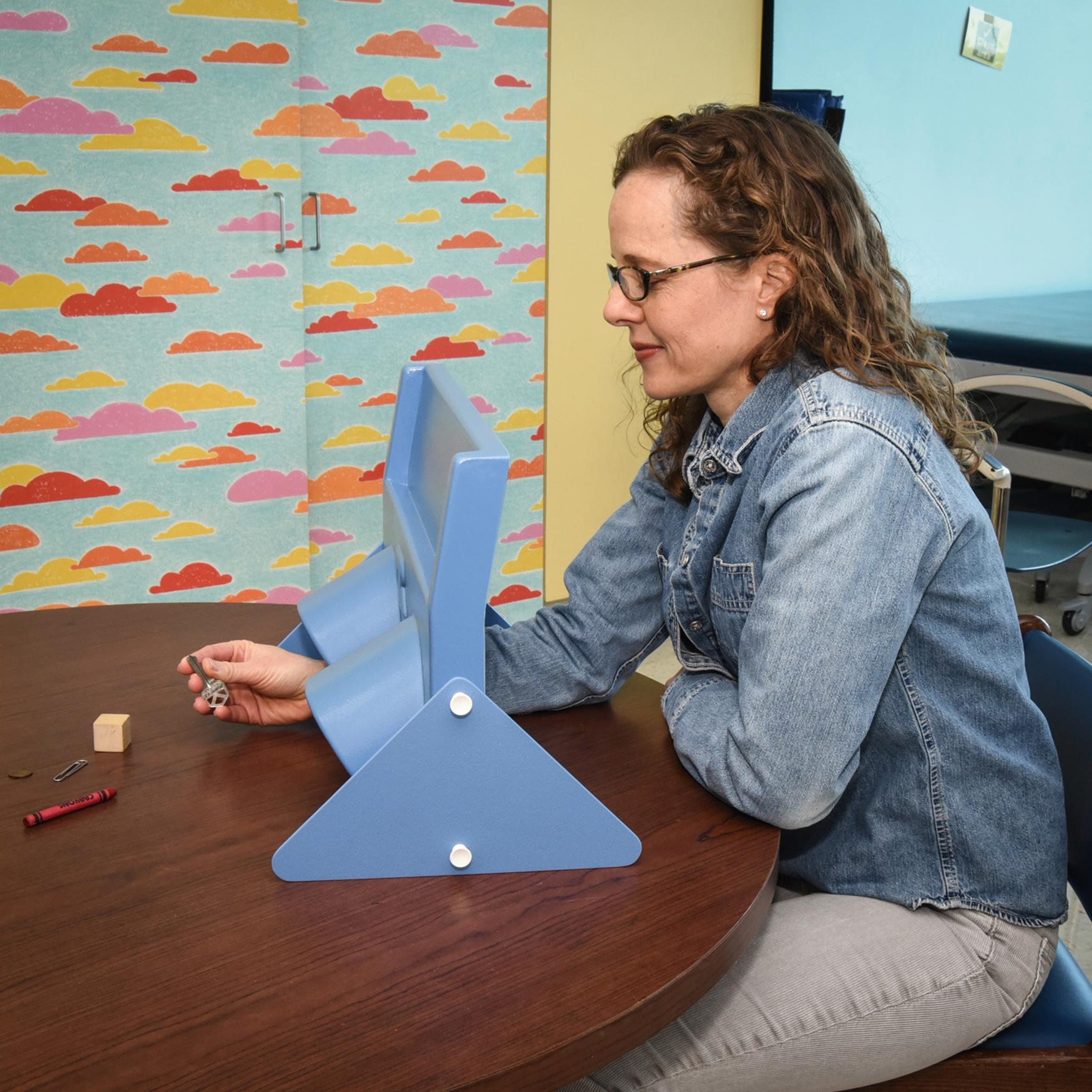
| Safety pin | Button | Penny | Cube | Pencil | Glove |
| Paper clip | Marble | Key | Bead | Spoon | String |
Additionally, the physical examination should also include other potential manifestations of the child’s central nervous system insult, such as cognitive impairments, balance, and lower extremity involvement. The child’s intellectual or cognitive impairments are difficult to assess in an office visit. Asking the child to follow voluntary commands and inquiring about the child’s school level along with participation in normal or specialized classroom provides a general baseline. Lower extremity involvement with hemiplegia, triplegia, or quadriplegia is also part of coordination of the overall care of the child.
Activity limitation is defined by the WHO-ICF as difficulty encountered by an individual in executing a task or an action. Disease-specific descriptions in CP of the overall functional impairment for executing tasks with the affected arm include the Manual Ability Classification System (MACS) and the House Classification. , Each system describes how children with spasticity use their hands to handle objects in daily activities ( Tables 32.3 and 32.4 ).
| Level | Description |
|---|---|
| I | Handles objects easily and successfully |
| II | Handles most objects but with somewhat reduced quality and/or speed of achievement |
| III | Handles objects with difficulty; needs help to prepare and/or modify activities |
| IV | Handles a limited selection of easily managed objects in adapted situations |
| V | Does not handle objects and has severely limited ability to perform even simple actions |
| Score | Designation | Activity Level |
|---|---|---|
| 0 | Does not use | Does not use |
| 1 | Poor passive assist | Uses as stabilizing weight only |
| 2 | Fair passive assist | Can hold on to object placed in hand |
| 3 | Good passive assist | Can hold object and stabilize for use by other hand |
| 4 | Poor active assist | Can actively grasp object and hold it weakly |
| 5 | Fair active assist | Can actively grasp object and stabilize it well |
| 6 | Good active assist | Can actively grasp object, stabilize it well, and manipulate it against other hand |
| 7 | Spontaneous use, partial | Can perform bimanual activities easily; occasionally uses hand spontaneously |
| 8 | Spontaneous use, complete | Uses hand completely independently, without reference to other hand |
Videotaping has also been a useful means of evaluating patterns of muscle firing and joint positioning during functional tasks. Review of a videotaped analysis for analysis of limb positioning and function changed the surgical plan in over 70% of cases in one review. Functional testing standardized tasks can assist in quantifying the severity of impairment and identify patterns of hand usage. Videotaping or functionally evaluating the patient performing routine activities using scored functional tests (e.g., Jebsen-Taylor Hand Function Test, Box and Blocks Test, Pegboard Test) may be helpful. The Moberg Pickup Test presents the child with a set of objects to pick up with each hand, with and without vision. Other validated evaluation tools that include videotape analysis include the Melbourne Assessment of Unilateral Upper Limb Function, the Quality of Upper Extremity Skills Test, the Shriners Hospital Upper Extremity Evaluation (SHUEE), and the Assisting Hand Assessment (AHA). , A common outcome measure for comparing preoperative and postoperative function includes the SHUEE, which includes sections on Dynamic Positional Analysis and Spontaneous Functional Analysis. The advantage of the AHA is its ability to assess hemiplegia hand use as an assisting hand in more realistic daily use patterns, rather than forcing unilateral use in other testing protocols.
In that CP is a movement disorder, motion laboratory assessment of children with upper extremity CP can provide noteworthy insight into the patterns of movement, both pathologic and compensatory. Fitoussi et al. report using a specific kinematic protocol to measure the ability of hemiplegic patients with CP to carry out simple daily tasks before and after therapy with either botulinum toxin injection or surgery. The study found that as problems in the forearm, wrist, and thumb were addressed and improved with therapy, the proximal kinematic problems also lessened. Other motion lab protocols have included assessment of coordination, range of motion, and spatiotemporal movement trajectories. ,
Use of the simultaneous video and fine needle electrode electromyography as part of motion lab analysis allows further characterization of patterns of muscle firing (phasic firing, spastic, dystonic, or flaccid). , The results of this testing can guide the surgeon in deciding whether to use a specific muscle as a donor for tendon transfer with avoidance of muscles that exhibit considerable spasticity or an unpredictable pattern of activity. EMG has also been used in the elbow to determine patterns of spasticity for deciding to lengthen the brachialis and/or biceps muscle.
Participation restriction is defined by WHO-ICF as a problem experienced by an individual in involvement in life’s situations that can be measured using standardized questionnaires, such as the Pediatric Outcomes Data Collection Instrument (PODCI), Pediatric Quality of Life Inventory (PedsQL) both generic and CP versions, Childhood Assessment of Participation and Enjoyment (CAPE), and Canadian Occupational Performance Measure (COPM). The COPM and Goal Attainment Scaling are unlike other standardized patient-reported outcome instruments due to the individualized approach used to establish goals. The COPM capitalizes on a semistructured interview that reflects the usual interaction between an occupational therapist and his or her client. Through this interview, parents and children identify performance activities that are perceived as important by the parent, child, and/or society. Performance is rated on a scale between 0 (cannot do) and 10 (can do very well), and the activities are used to establish goals for treatment. Scores between baseline and reassessment are calculated to evaluate outcomes of treatment. Although individuals may differ in their ideas of what constitutes successful outcomes, research suggests that a change of two or more points reflects meaningful change. Asking the patient and/or caregiver what they expect to achieve with surgical intervention is mandatory to avoid unrealistic hopes and to set shared, realistic expectations.
After a full assessment of bodily impairment, activity limitation, and participation restriction, an overall treatment plan can be customized for each individual patient. Continued advancements in assessment of children with CP has allowed us a greater understanding of the different constellations of deformity patterns that may be present in CP. The upper extremity in CP is most commonly treated with multiple simultaneous procedures to minimize the number of surgical interventions necessary for a child. Multiple simultaneous surgical procedures to improve elbow, forearm, wrist, finger, and thumb position are commonly necessary. Subsequent “fine-tuning” surgeries to address changes with growth and development are considered if changes occur over time. Surgery can improve function in the arm; however, no operation will restore normal function to the spastic limb.
The surgical techniques performed fall into four main categories: (1) soft tissue releases (tendon lengthening, myotomy); (2) tendon transfer; (3) bone or joint (osteotomy, fusion); and (4) neurectomy (selective and hyperselective).
As outlined in Table 32.5 , each of these surgical techniques can be applied sequentially to each anatomic area of the upper limb: shoulder, elbow, forearm, wrist, fingers, and thumb.
| Soft Tissue Release/Lengthening | Tendon Transfer | Bone/Joint Stabilization | Neurectomy | |
|---|---|---|---|---|
| Shoulder | IR: Pectoralis major, subscapularis ER: Teres minor Infraspinatus Posterior deltoid |
Humeral derotation osteotomy | ER: Axillary nerve (posterior and teres minor branches), infraspinatus branch suprascapular nerve | |
| Elbow | Brachioradialis Brachialis Biceps |
Musculocutaneous | ||
| Forearm | Pronator teres Pronator quadratus |
Pronator teres rerouting | Radius/ulna osteotomy One bone forearm |
|
| Wrist | Flexor-pronator slide FCU, FCR, PL |
FCU to ECRB ECU to ECRB |
Proximal row carpectomy Wrist arthrodesis |
|
| Fingers | Flexor-pronator slide FDS FDP |
Superficialis-to-profundus transfer | Median Ulnar |
|
| Thumb | Adductor FPB FPL |
EPL rerouting | MCP capsulodesis MCP fusion CMC fusion |
Soft tissue release with muscle-tendon lengthening is performed using one of four methods ( Fig. 32.2 ). The first method is a Z-plasty of the tendon and suturing the cut ends together in an elongated state. A second method is fractional lengthening whereby the muscle-tendon junction is identified. The tendon is isolated along its origin from the muscle. A tendinous segment is identified that has muscle on both sides of the tendon. The tendon is incised, leaving the muscle intact on both sides of the cut. The respective part (e.g., elbow or wrist) is stretched, elongating the cut ends of the tendon within the substance of the muscle. No suturing is required. The third method involves releasing the origin of the muscle and allowing it to slide in a distal direction during stretching of the limb. The last method is a myotomy that completely releases the muscle.
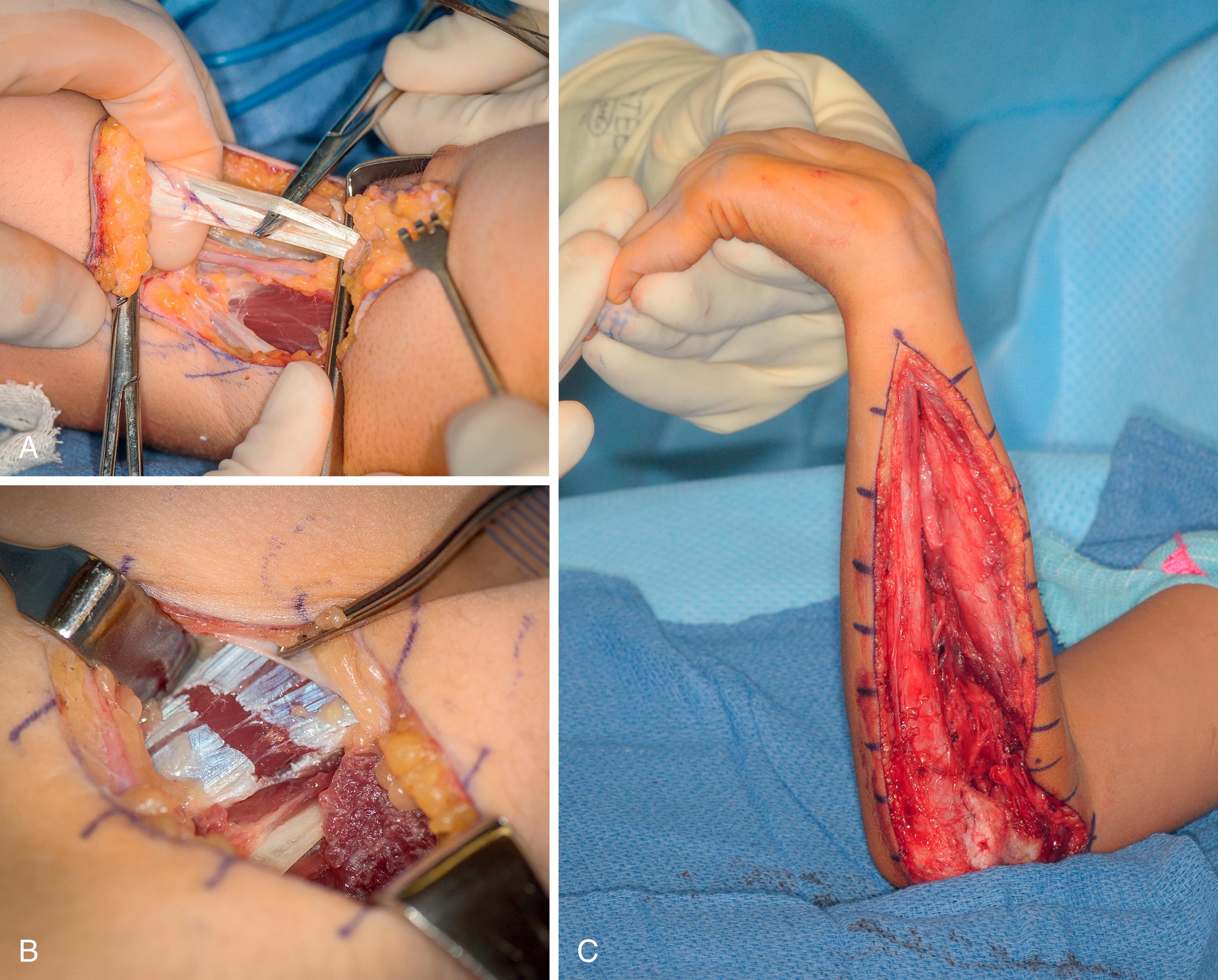
The particular lengthening technique utilized depends on numerous factors including the anatomy of the muscle-tendon unit, the length required, and the surgeon preference. For example, there are certain muscles that have short muscle tendon units (e.g., biceps muscle) and are not amenable to fractional lengthening. In addition, if substantial lengthening is required, fractional lengthening would exceed the length of the muscle-tendon junction, resulting in discontinuity between the muscle and tendon. Lastly, certain muscles are amendable to release of the origin and allowing the muscles to slide in a distal direction (e.g., flexor pronator mass and thenar muscles).
Proximal muscle stability and control is mandatory for hand function. Evaluation of the upper limb requires synthesis of the assessment of each anatomic segment of the limb. The spastic shoulder is usually positioned in internal rotation and adduction. The shoulder must be stable and well positioned, allowing the arm, forearm, and hand to function. With reference to the elbow, flexor spasticity is commonplace. In mild hemiparesis, this yields elbow flexion posturing during walking and times of excitement. In more severe cases, a myostatic contracture develops that limits elbow extension. The forearm, referred to as “the forgotten joint,” is, however, a frequent source of discontentment. The common forearm position is spastic pronation that is initially supple (dynamic) and develops a myostatic contracture over time. Excessive pronation impedes supinations activities, such as feeding, carrying a tray, obtaining soap from a dispenser, catching a ball, and wiping one’s buttocks. Tendon releases and transfers can improve forearm position (discussed below). Surgical management tends to focus on the wrist flexion with a variety of options available. The management of the spastic wrist and hand in CP follows the concepts of “hierarchy of hand function” or the “reconstruction ladder” ( Table 32.6 ).
| Priority | Function | Task |
|---|---|---|
| 1 | Wrist extension | Tenodesis grasp and pinch |
| 2 | Lateral pinch | Activities of daily living |
| 3 | Grasp | Holding |
| 4 | Opening | Object acquisition |
| 5 | Coordinated hand function | Dexterity |
The pivotal fundamental movement is wrist extension, which yields tenodesis for grip as the fingers flex into the palm and tenodesis for lateral pinch as the thumb adducts against the index finger. Wrist extension also aligns the finger flexors along Blix’s length-tension curve for maximum active grip. The second most essential movement is lateral pinch, which is necessary to perform numerous activities of daily living. Most daily activities are performed using lateral pinch, such as holding an object, turning a key, or using a fork. The third essential motion is grasp, which allows the holding of objects. The fourth and last movement is digital opening for object acquisition. The reason to place this function lowest on the ladder is that wrist flexion yields passive digital opening, which is often adequate for object procurement. In addition, synchronous digital opening is difficult to achieve via surgery as metacarpophalangeal joint extension requires both extrinsic function (extensor digitorum communis, extensor indicis proprius, and extensor digiti quinti) and intrinsic function (interphalangeal joint extension with interossei and lumbricals). Providing a comprehensive plan of all involved joints is necessary, as outlined in Table 32.5 .
The spastic shoulder is usually positioned in internal rotation and adduction. The child may be bothered by the posture and the inability to access his or her axilla. Severe internal rotation and adduction can make the axilla inaccessible, leading to stench and intertriginous infections. Treatment requires release of the offending spastic muscles based upon the clinical examination. The potential culprit spastic muscles include the pectoralis major and subscapularis. However, additional muscles such as the latissimus dorsi and teres major can contribute to the position. Clinical examination can often discern the most spastic muscles. These muscles can be treated by lengthening or release depending on their anatomy. For example, a tight spastic pectoralis major can be addressed by simple fractional lengthening via a small incision, as there is ample muscle-tendon junction on its undersurface. In contrast, the subscapularis requires a more extensive deltopectoral approach with release of the upper tendinous portion. The goal is to provide ample access to the axilla. The procedure is performed via a deltopectoral approach extended into the axilla. The deltopectoral approach allows access to the pectoralis major and the subscapularis. The approach can be extended through the axilla if the latissimus dorsi and teres major are contributing. Following surgery, the arm is positioned in an abduction pillow for 3 weeks followed by passive range of motion.
The shoulder can also be positioned in excessive external rotation ( Fig. 32.3 ). This awkward position can negate the child in a wheelchair from entering through a doorway. The offending muscle(s) are usually the infraspinatus, teres minor, and/or posterior deltoid. These muscles can be released from their insertions to lessen the shoulder external rotation. If the contracture is fixed and severe, a shoulder derotation osteotomy can be performed. This has been an effective treatment in the adult with fixed shoulder external rotation deformities. The muscles can also be denervated by selective neurectomy of their motor nerve ( Case Study 32.1 ).
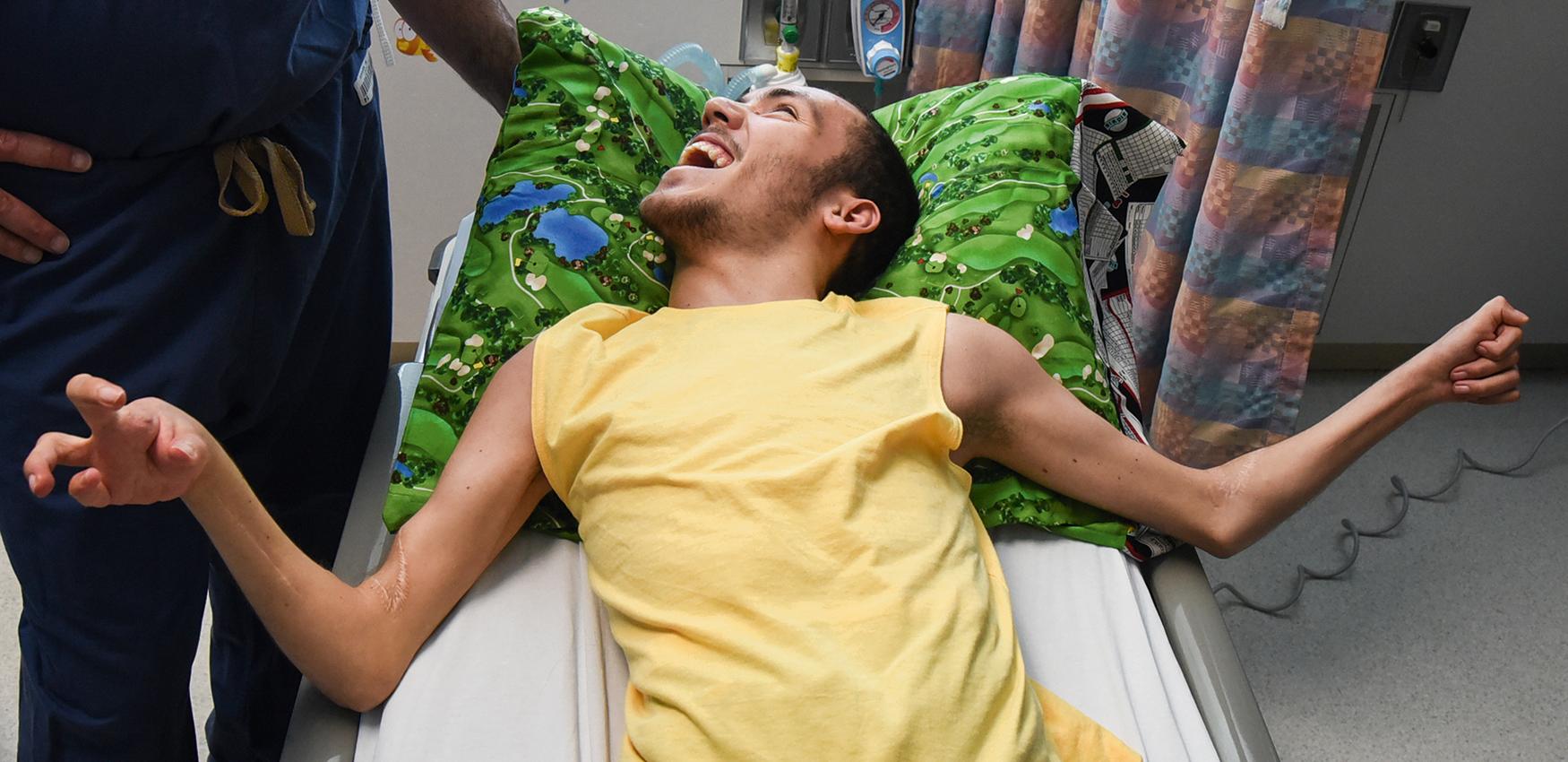
FLOAT NOT FOUND
Emanuel is a 22-year-old male with spastic quadriplegia ( eFig. 32.1 ). His shoulder is postured in marked external rotation, prohibiting him from passing through doors. Previous bilateral elbow release and wrist fusions have been performed.
Neurectomies were performed to lessen his marked external rotation. The surgical technique is displayed ( eFigs. 32.2 to 32.9 ) along with his immediate ( eFig. 32.10 ) and short-term outcome ( eFig. 32.11 ).
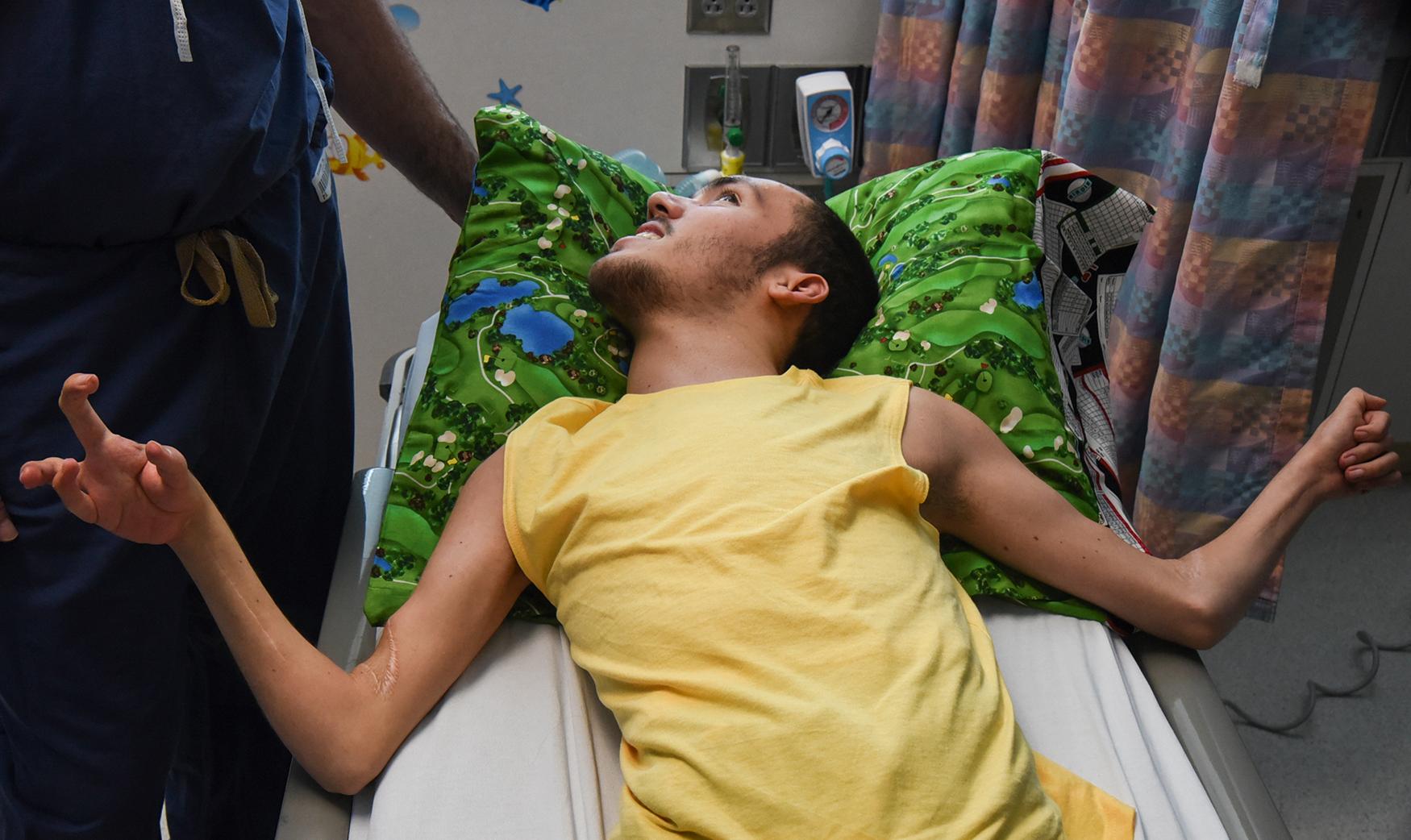
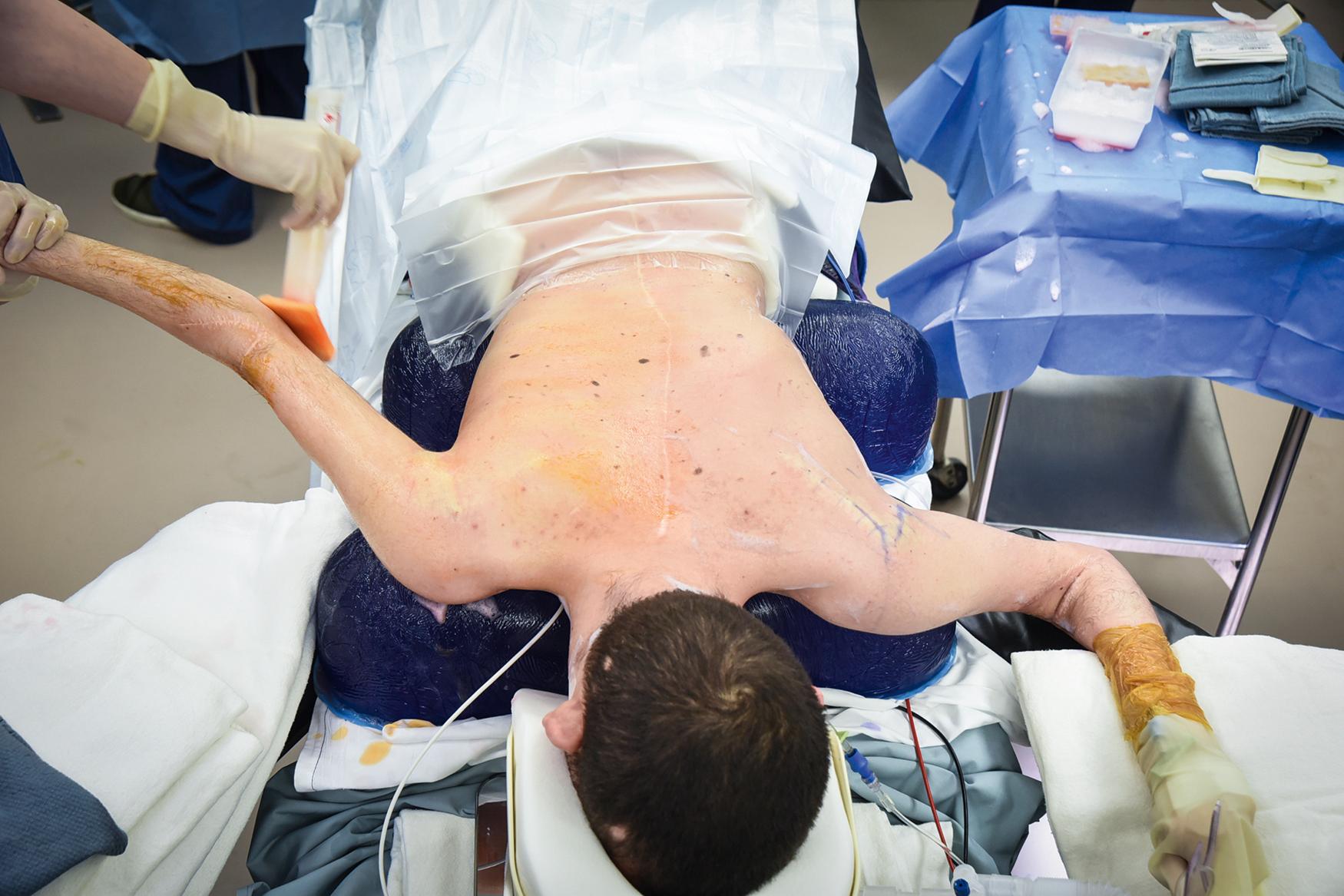
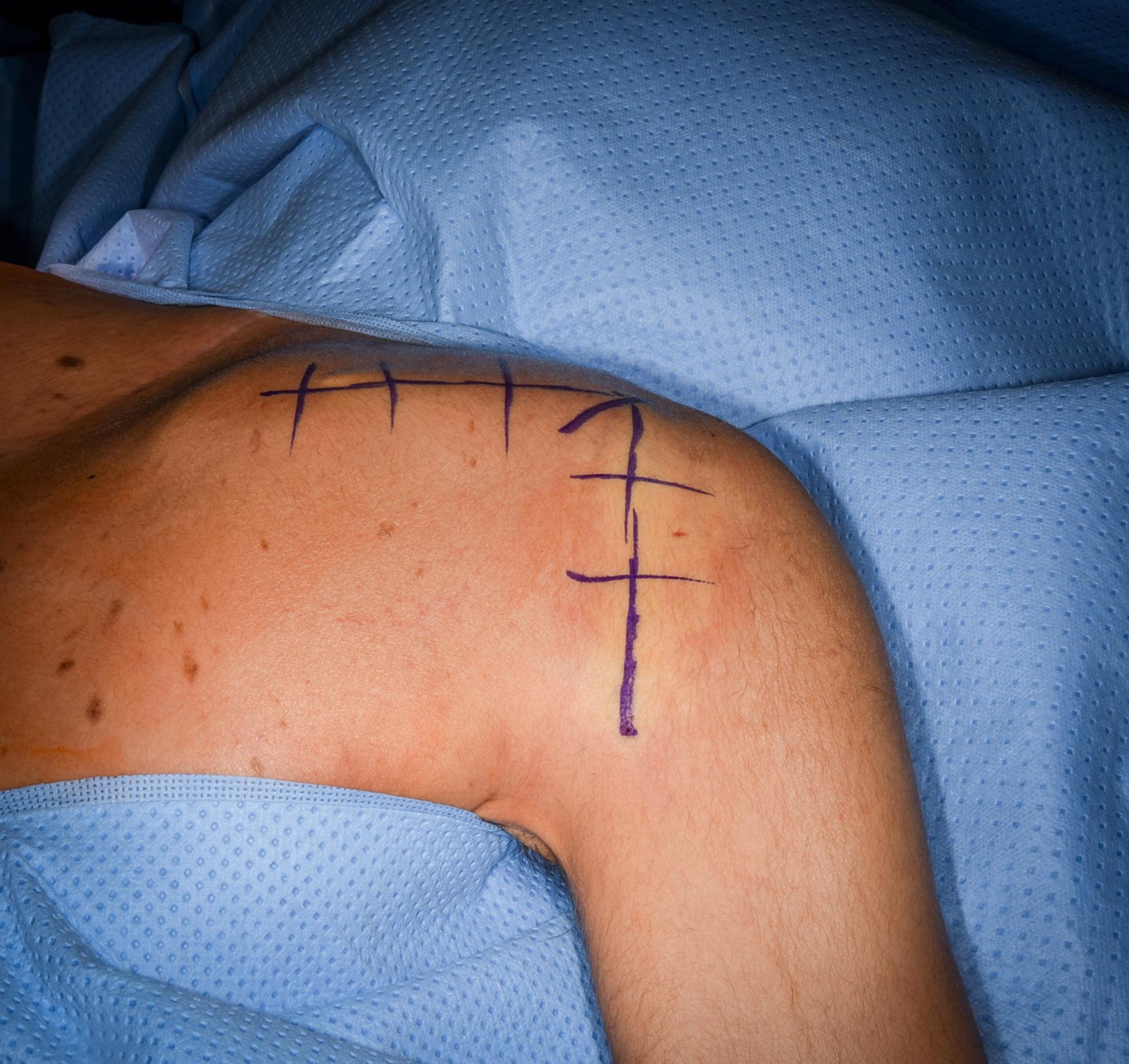
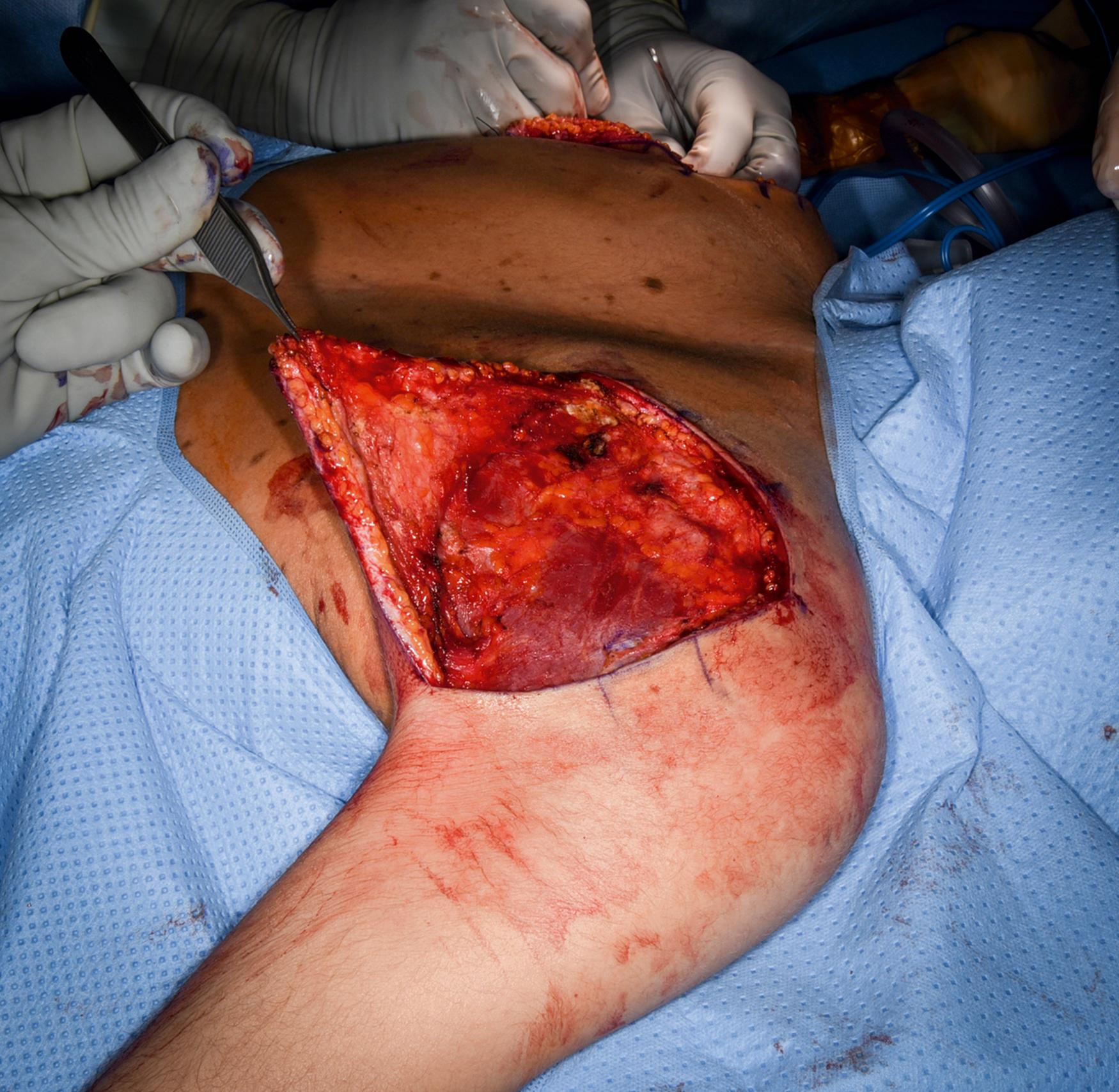
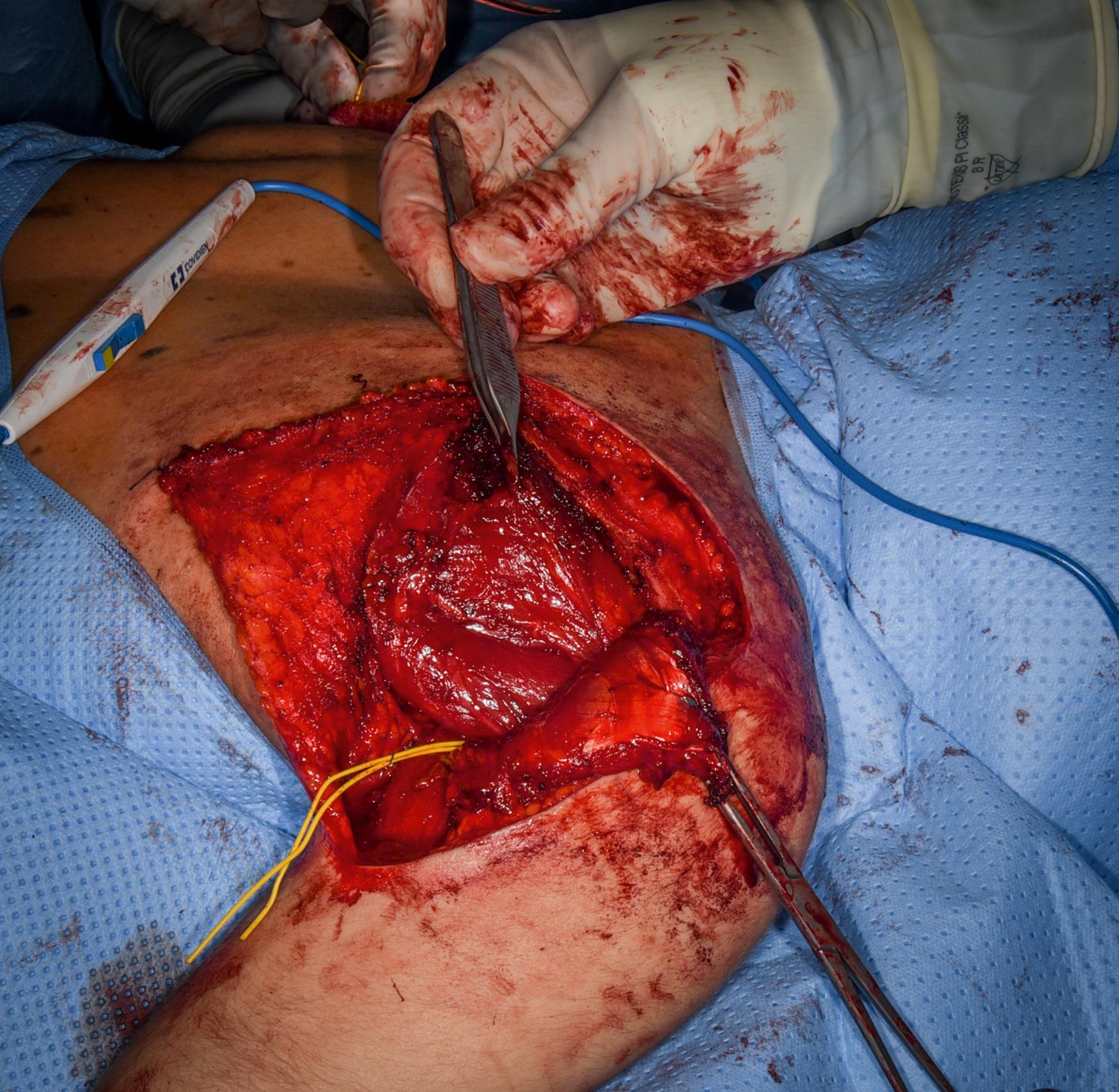
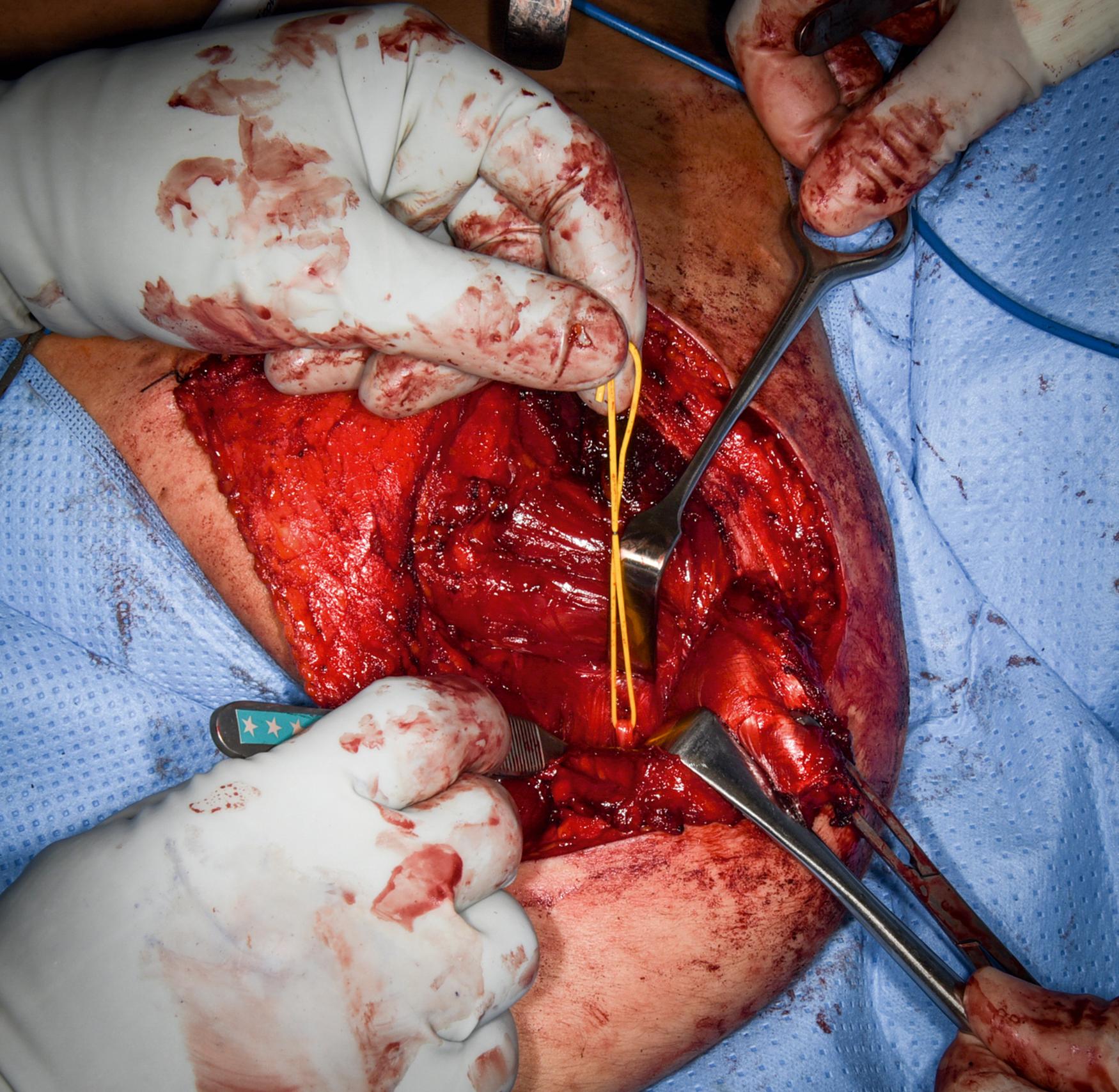
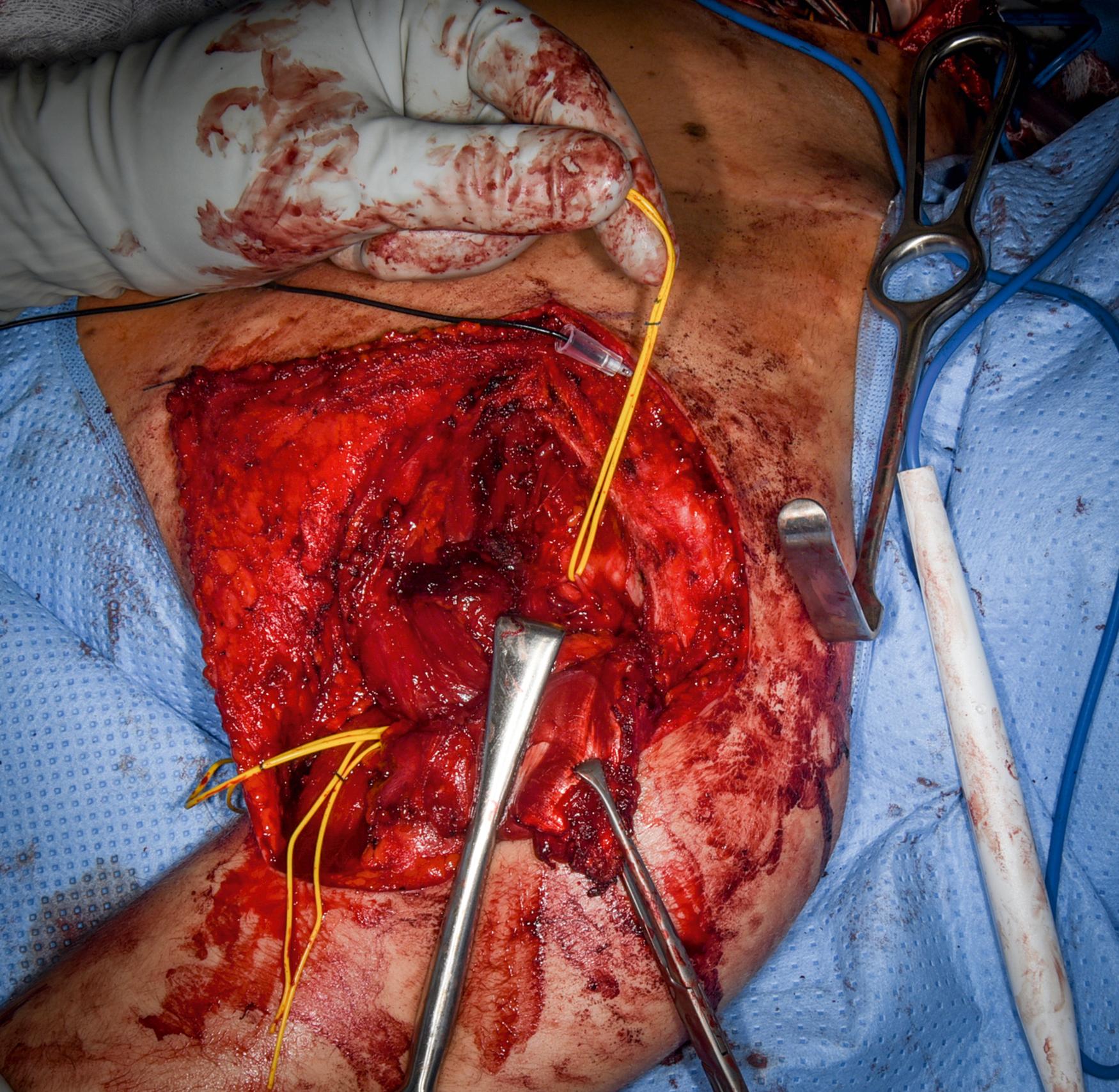
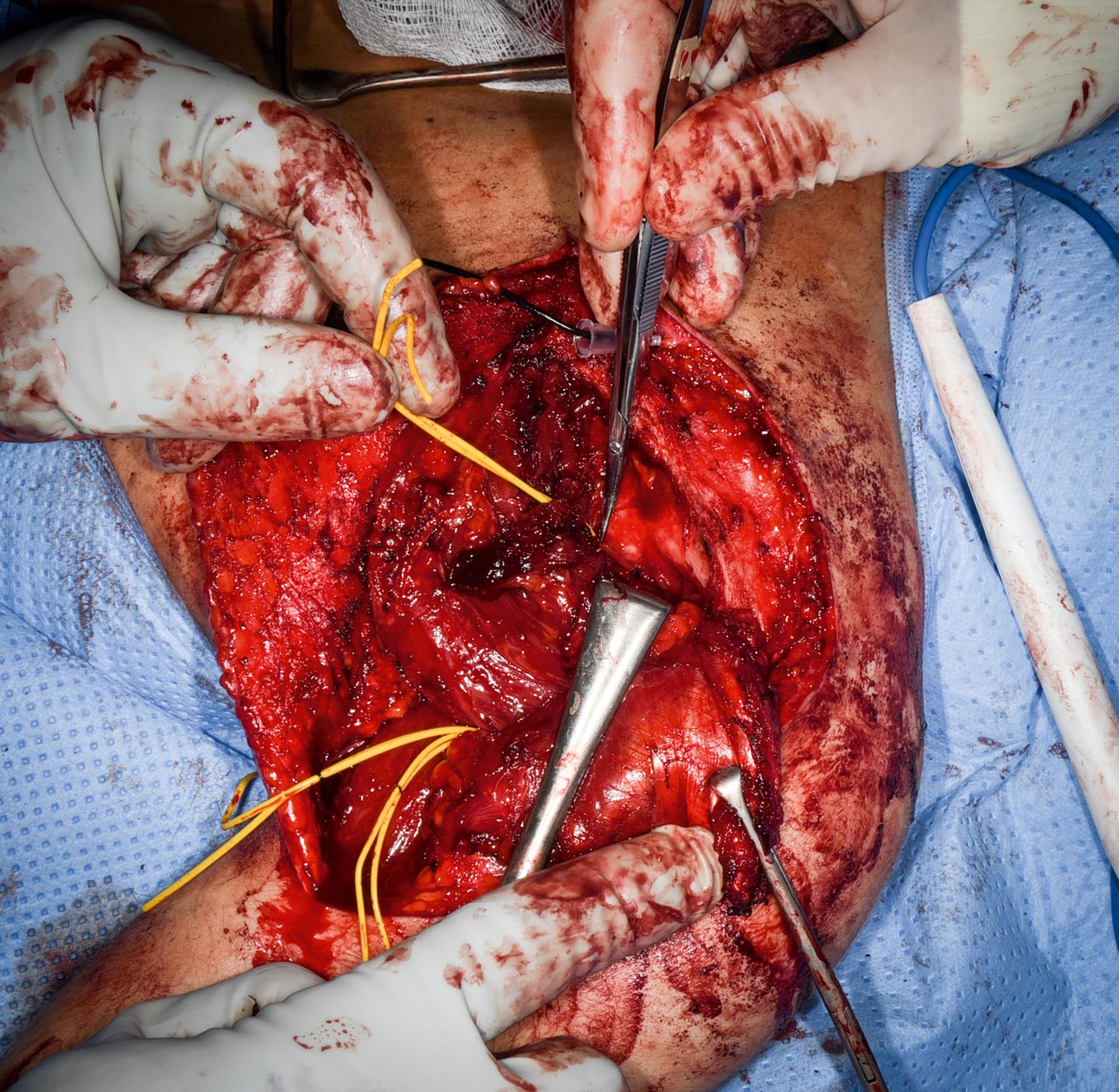
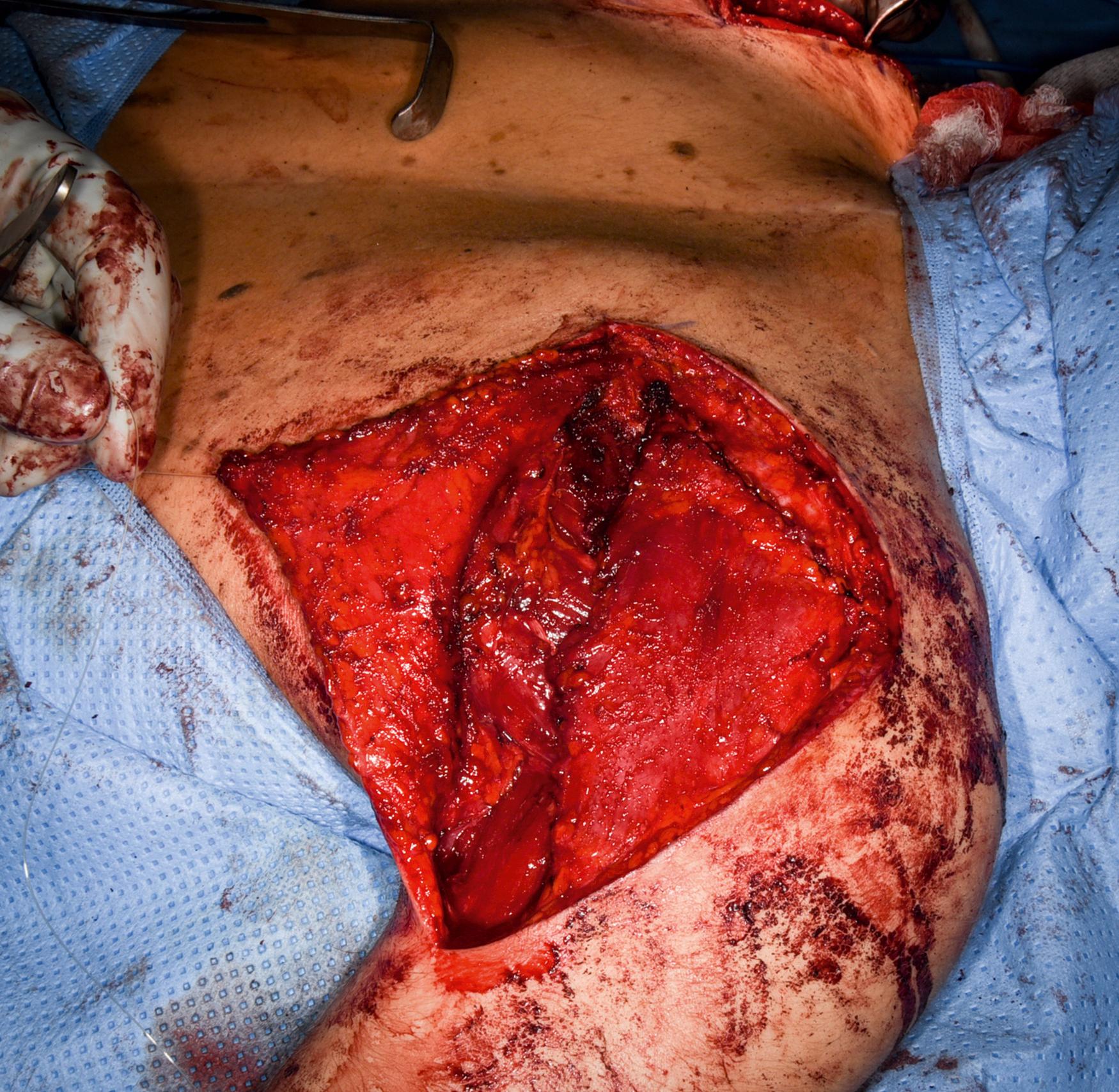
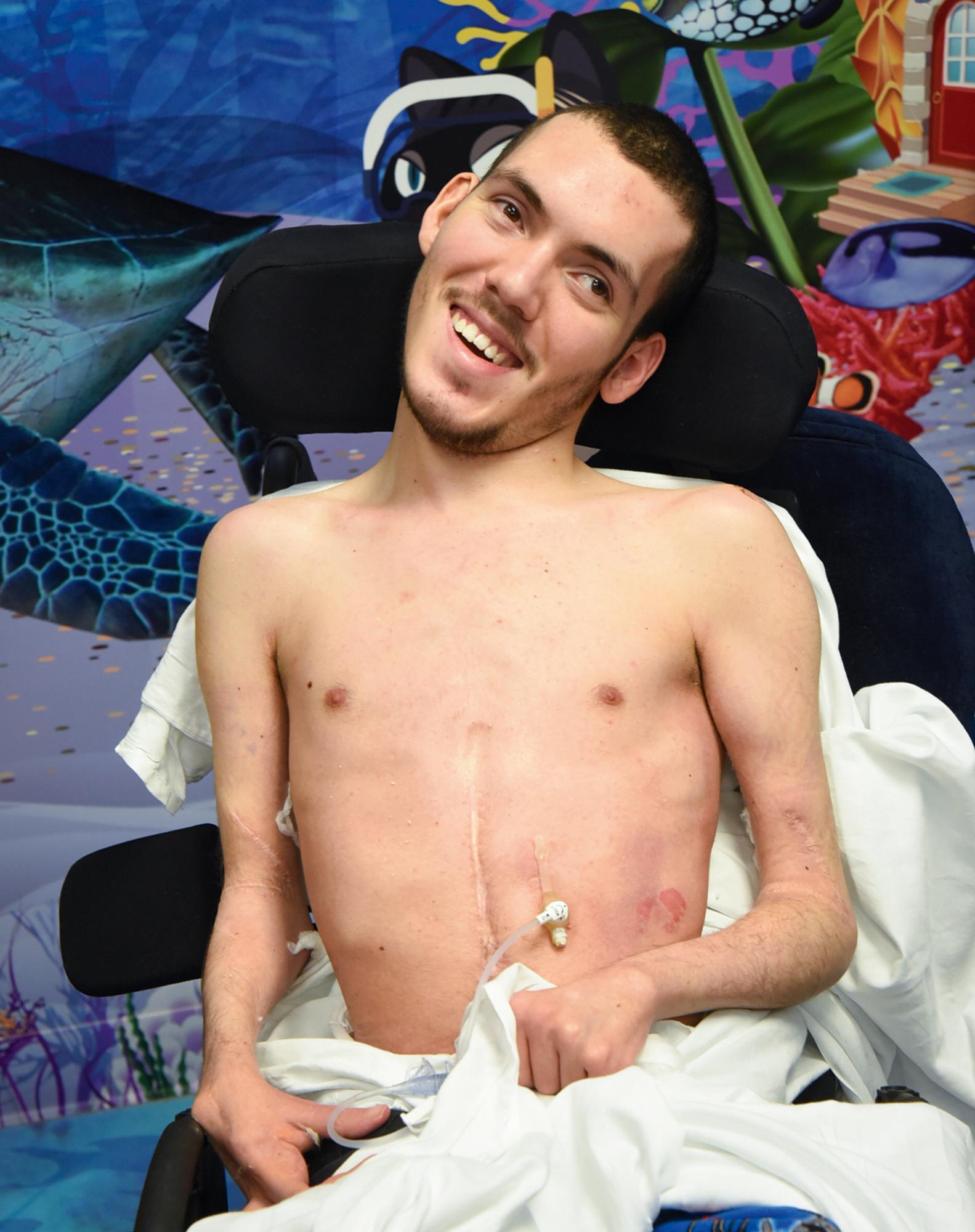
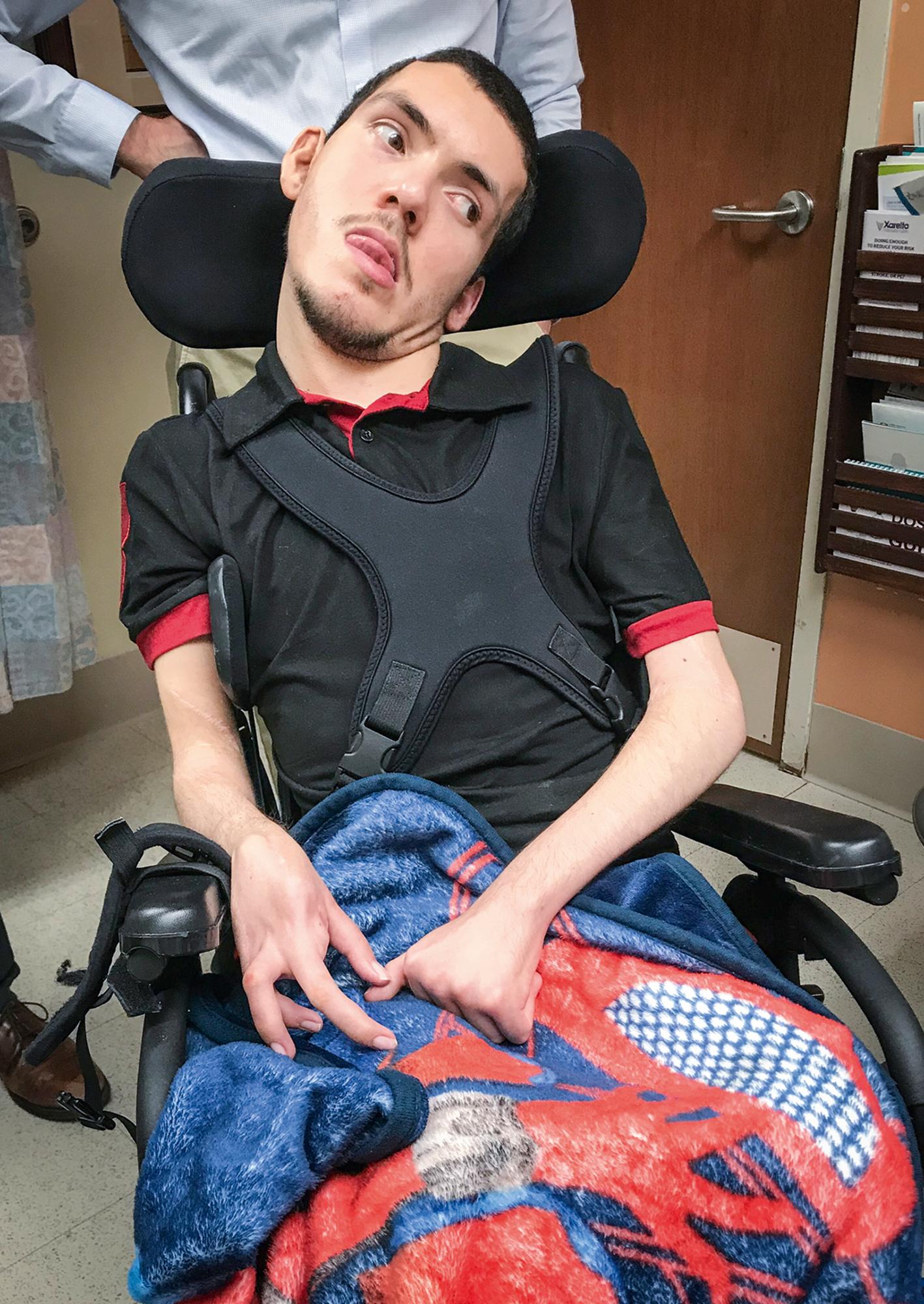
Severe internal rotation and adduction contractures prohibit access to the axilla. We prefer lengthening or releasing the tight spastic muscles. We do not recommend tendon transfers, as the results are unpredictable. In patients with spasticity but without contracture, selective neurectomies are preferred.
The patient with hemiparesis is frequently bothered by the elbow flexion deformity. Soft tissue release with varying degrees of elbow flexor lengthening is the surgical treatment of choice. , This posture is evident during running and amplified with stress. In mild cases, there is full passive elbow extension without a myostatic contracture. Botulinum toxin injection into the elbow flexors (brachioradialis, brachialis, and biceps muscles) can provide temporary relief, but the posture uniformly reverts over time. Surgery can resolve this posturing as long as the patient is willing to accept the low risks of undergoing a surgical procedure ( Fig. 32.4 , ![]() ). The procedure is performed via a transverse incision across the antecubital fossa. The nerve lateral antebrachial cutaneous and radial nerves are mobilized out of harm’s way. The brachioradialis muscle is isolated and the muscle cut with an electrocautery (also known as myotomy). The biceps tendon is mobilized and the underlying brachialis muscle tendon junction identified. A fractional lengthening is performed of the brachialis muscle by cutting the tendon at the muscle-tendon junction. The biceps may or may not be lengthened depending on the patient’s ability to supinate. Supination is frequently limited, and the biceps is not lengthened. A fractional lengthening may be performed if the patient is able to fully supinate and there is adequate muscle-tendon junction. The skin is closed with absorbable suture and dressing applied. A long-arm cast is applied for 4 weeks. Following cast removal, therapy is instituted and the arm is mobilized. A nighttime splint is worn for at least 3 months.
). The procedure is performed via a transverse incision across the antecubital fossa. The nerve lateral antebrachial cutaneous and radial nerves are mobilized out of harm’s way. The brachioradialis muscle is isolated and the muscle cut with an electrocautery (also known as myotomy). The biceps tendon is mobilized and the underlying brachialis muscle tendon junction identified. A fractional lengthening is performed of the brachialis muscle by cutting the tendon at the muscle-tendon junction. The biceps may or may not be lengthened depending on the patient’s ability to supinate. Supination is frequently limited, and the biceps is not lengthened. A fractional lengthening may be performed if the patient is able to fully supinate and there is adequate muscle-tendon junction. The skin is closed with absorbable suture and dressing applied. A long-arm cast is applied for 4 weeks. Following cast removal, therapy is instituted and the arm is mobilized. A nighttime splint is worn for at least 3 months.
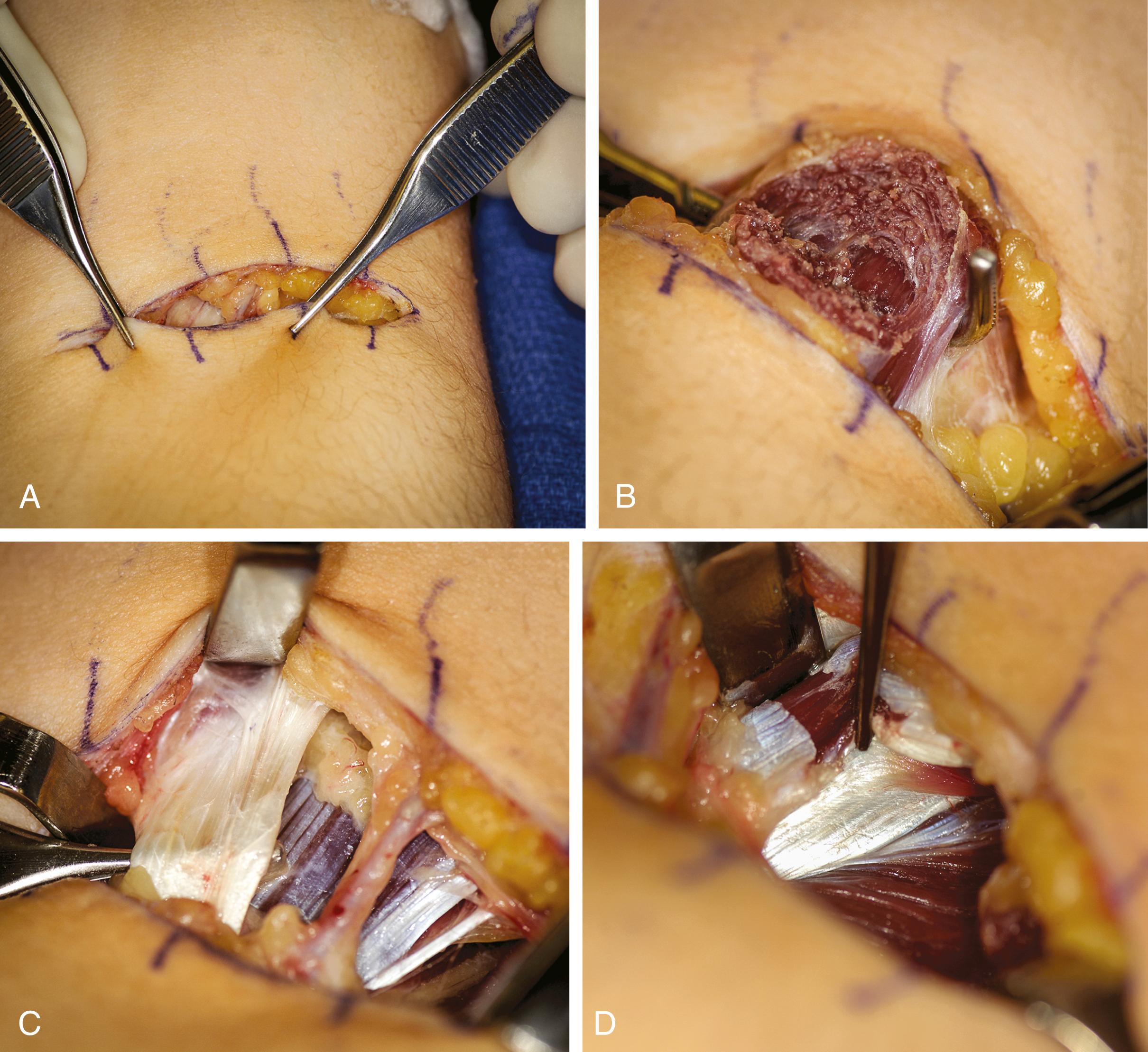
Increasing spasticity of the elbow flexors yields to more severe flexion with a myostatic contracture. Passive elbow extension is incomplete. For fixed contractures, surgery is the indicated treatment for contractures greater than 40 degrees that interfere with function or hygiene ( Fig. 32.5 , ![]() ). The offending components include the skin, brachioradialis, biceps, and the brachialis. The joint capsule is usually secondarily involved and capsular release is to be avoided. Capsular release may allow additional correction but lead to neurovascular injury. Secondary excessive stretch may also jeopardize elbow flexion for hand to mouth activity. The skin is addressed by a long Z-plasty that allows wide access to the underlying structures. The longitudinal limb is directly down the center of the elbow, with Z-limbs angled approximately 45 degrees; the longitudinal and Z-limbs must be equal lengths. Once the skin is incised, the biceps is lengthened by Z-lengthening, the brachialis by fractional lengthening, and the brachioradialis by myotomy. The biceps tendon Z-lengthening is closed with absorbable suture and dressing applied. A long-arm cast is applied for 4 weeks. Following cast removal, therapy is instituted and the arm is mobilized. A nighttime splint is worn for at least 3 months. Results of elbow lengthening procedures report significant improvements in elbow extension.
). The offending components include the skin, brachioradialis, biceps, and the brachialis. The joint capsule is usually secondarily involved and capsular release is to be avoided. Capsular release may allow additional correction but lead to neurovascular injury. Secondary excessive stretch may also jeopardize elbow flexion for hand to mouth activity. The skin is addressed by a long Z-plasty that allows wide access to the underlying structures. The longitudinal limb is directly down the center of the elbow, with Z-limbs angled approximately 45 degrees; the longitudinal and Z-limbs must be equal lengths. Once the skin is incised, the biceps is lengthened by Z-lengthening, the brachialis by fractional lengthening, and the brachioradialis by myotomy. The biceps tendon Z-lengthening is closed with absorbable suture and dressing applied. A long-arm cast is applied for 4 weeks. Following cast removal, therapy is instituted and the arm is mobilized. A nighttime splint is worn for at least 3 months. Results of elbow lengthening procedures report significant improvements in elbow extension.
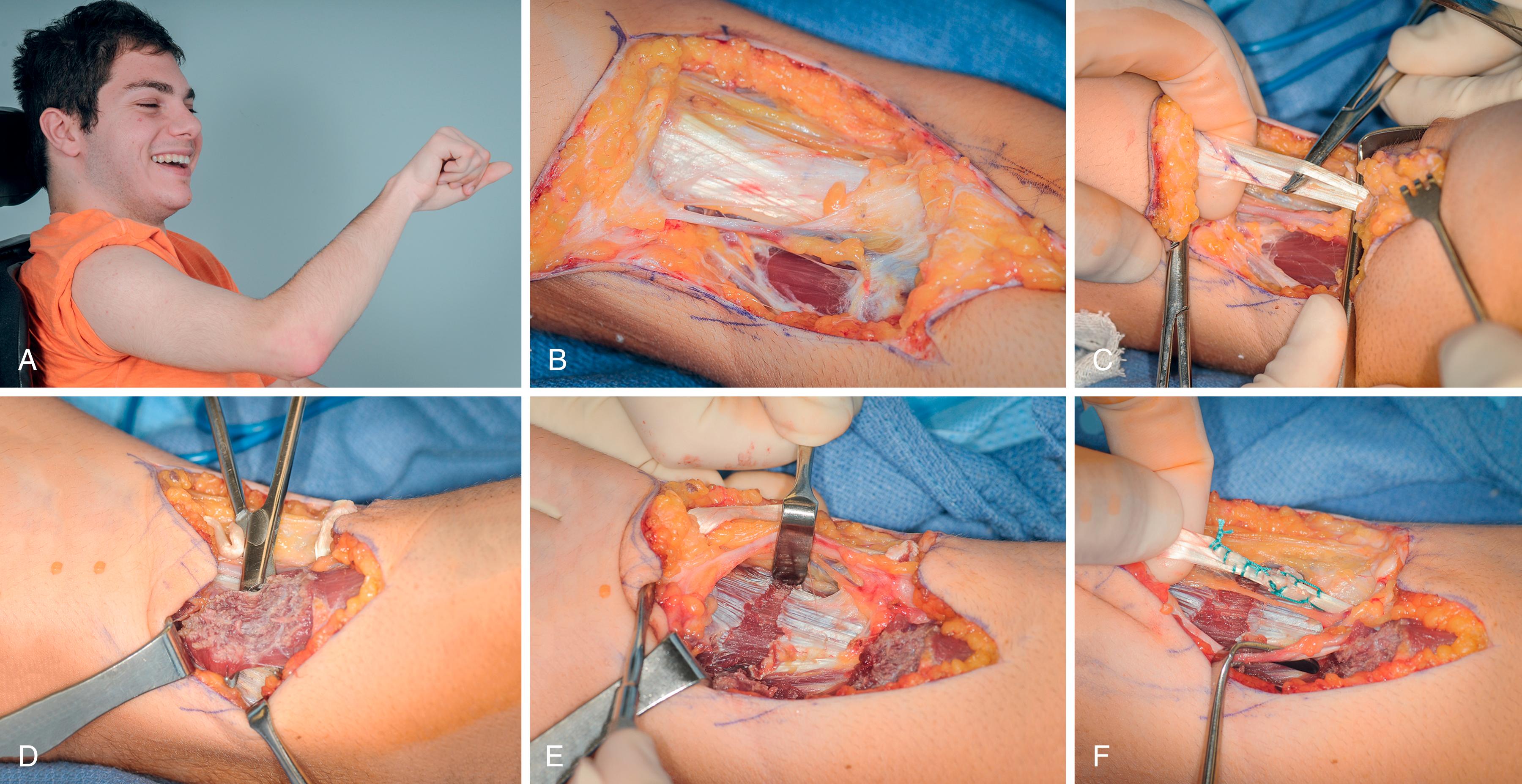
An evolving technique is neurectomy of the musculocutaneous nerve motor branches to lessen spasticity of the elbow flexors. In patients with no function, a complete musculocutaneous neurectomy can be performed. In patients with volitional control, sectioning a portion of the nerve is preferred. Partial neurectomy of approximately 50% to 80% of the nerve innervating the muscle is necessary to prevent recurrence via reinnervation from sprouting of adjacent motor units. The neurectomy can be performed anywhere along the nerve (main trunk, main motor nerve, primary branching of main motor nerve, or secondary branches of motor nerve). A nerve stimulator is necessary to isolate the motor branches and to preserve sensory branches.
Dynamic elbow spasticity that has not been responsive to therapy
Fixed flexion contracture greater than 40 degrees that interferes with function or hygiene
Individualize patient goals.
Perform repeated clinical examinations.
Maximize nonoperative modalities and consider botulinum toxin to predict surgical outcomes.
Apply a sterile circular tourniquet (HemaClear, OHK Medical Devices, Grandville, MI) that exsanguinates during application and allows complete access to the elbow.
Always identify and protect the neurovascular structures early in the procedure. The radial nerve and lateral antebrachial cutaneous nerves may be displaced by the spastic muscles and/or contracture.
Make a transverse antecubital incision for dynamic spasticity and a Z-plasty incision for a fixed deformity.
Identify the lateral antebrachial cutaneous (lateral to the biceps tendon) and radial nerves (between the brachioradialis and brachialis muscles).
Minimal biceps lengthening can be performed via fractional technique (short musculotendinous junction); however, more extensive lengthening requires Z-lengthening of the tendon.
Mobilize the neurovascular bundle from the anterior surface of the brachialis prior to brachialis fractional lengthening.
Brachialis fractional lengthening and brachioradialis myotomy.
Avoid joint capsular release in long-standing contractures.
Failure to identify the neurovascular structures can lead to iatrogenic injury.
Inadequate hemostasis can lead to postoperative hematoma.
Cast application is preferred to allow for wound and tendon healing.
Cast removal in a month is followed by active and passive range-of-motion exercises.
Become a Clinical Tree membership for Full access and enjoy Unlimited articles
If you are a member. Log in here